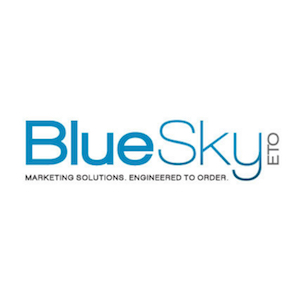There’s a very fine line between utilizing brand building communications and simply sending spam. In the former, your message contains worthwhile insights, credible benefits, and something of perceived value to your reader. Such communications are welcomed, even while helping your brand management and raising your profile among recipients.
The latter is more often than not seen as “junk mail.” It serves only to reinforce a negative image of your brand. No company wants to be thought of as a spammer, simply trying to shill a product. Once they get that reputation, it sticks like the proverbial glue. It’s nearly impossible to shake.
The term “spam” comes from a 1970s British TV sketch comedy show, “Monty Python’s Flying Circus.” A hapless customer finds himself at a cafe. Here, every item on the menu includes the canned meat product, “Spam.” The waitress – seen in this YouTube video — insists on reciting every item with its various iterations of Spam, much to the customer’s dismay. A decade later the term came to signify over-frequent, repetitive repeats of useless information, and has been used ever since.
Creating Brand Building Content

Sales Leads. If your readers are following up and clicking on the offer you’re including in your blog, you’re doing it right. Leading marketing guidance company Hubspot identifies this as the “call to action.” This is where you encourage the reader to ask for more information, or to interact with your company in one way or another.
But how do you know how to target the right audience? Hubspot recommends you develop “Personas” for your different clients. Personas help draw up a profile of the ideal client. Then you aim your blogs at what they need to succeed. When you hit a majority of those needs in your post, you’re on your way to brand building and closing a lead. Focusing on a particular persona when formulating your blog will almost always ensure a positive response.
Related: 5 Lead Nurturing Campaign Strategies Every Marketer Should Follow
Readers Are Sharing Your Content: Just as important as that positive response is the sharing of your content on social media, by those who received it. If readers like what they see, they’ll tell others. Brand building is as simple as that. Be sure your blog easily enables readers to share your post, via social media sites like Facebook and Twitter. Likewise, be sure to re-post and re-tweet blogs that you find of value. You’ll help build your own audience if readers know they can count on you.
You’ve Started Developing a Following: A really good post will almost always elicit comments from enthused readers. It’s a good target to aim for. Once you start hitting your brand building mark consistently, the audience will keep returning for more. Analytics have come a long way in a short time. Producers can now see numbers practically in real time and know fairly quickly who’s looking at what content. If you can see the number of visitors to your site growing over time, you’ll know you’re producing blogs that are valuable. Readers are beginning to see you as a thought leader, adding to your brand’s value and importance. Keep going!
Producing a strong blog that grows virally and attracts attention is worth the effort. Once readers perceive your work to be of value to them and their work, they’ll be more inclined to spread the word. They’ll help establish brand awareness in a crowded marketplace and give you a leg up on the competition.
Offering blogs with valued content, tracking their progress and “shares”, and repeating what works will help support your brand building efforts. Consistency is key.
Fintech Marketing Strategy: 10 Ways to Build Your Financial Brand
Financial services marketing has traditionally been a somewhat bland business offering—at least as far as consumers are concerned. But that's exactly why modern-day marketing tactics have had to adapt—to meet people's ever-changing needs. Fintech answers that call in...
The Essential Guide to Car Dealership Marketing
For auto industry marketers, there have been some important changes to negotiate over the past year. COVID-19 caused a decrease in sales and changed car dealership marketing habits. But there's good news. As the world begins to "reopen," more people will be looking to...
Geo-Targeted Marketing: What is it and How Can it Help Your Brand?
Location, location, location. You may have heard this phrase from a realtor emphasizing the value of a house or building based on its whereabouts. But did you know it can also apply to your brand's marketing strategy? Geo-targeted marketing, aka location-based...







